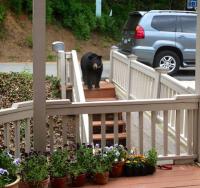Understanding urban animals
April 6, 2015
The stereotypical trappings of urban living -- fine restaurants, boutique shopping, amazing people-watching – need to accommodate one more city dweller: wildlife.
Cities are traditionally seen as places for people, but many species of wildlife thrive in urban areas. Interactions between humans and wildlife happen more often in urban areas than any other place on Earth. These interactions affect human health, safety and welfare, in both positive and negative ways.
Wildlife in cities control pests, pollinate plants and can be fun to watch (who hasn’t smiled while watching a bear stroll down the sidewalk?), but they also damage property, spread disease and sometimes attack people and pets.
In Urban Wildlife Conservation: Theory and Practice, leading environmental researchers M. Nils Peterson, Robert A. McCleery and Christopher Moorman synthesize the latest ecological and social studies on urban wildlife conservation into an interdisciplinary and practical book. Peterson is a CHANS-Net member.
Dense human populations, buildings, impermeable surfaces, introduced vegetation, and high concentrations of food, water, and pollution change wildlife populations and communities in ways that are different from what happens in more natural environments.
The book provides a foundation for the future growth and understanding of urban wildlife ecology and management by defining the concepts used to study and describe urban wildlife. The authors also offer a cohesive understanding of the coupled natural and social drivers that shape urban wildlife ecology, describe the patterns and processes of wildlife response to an ever-urbanizing world and explain the mechanisms behind them, and propose ways to create physical and social environments that are mutually beneficial for both humans and wildlife.







